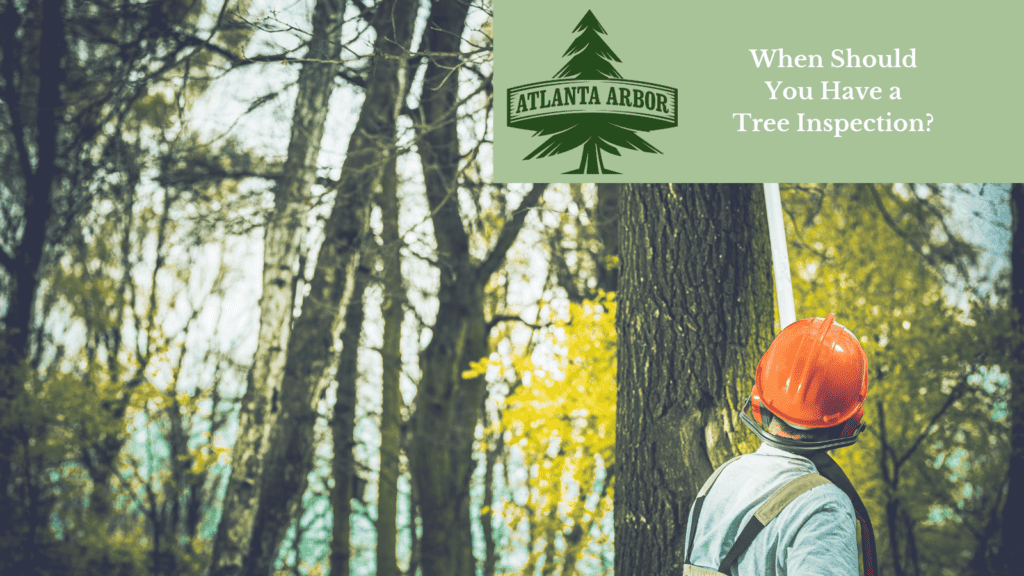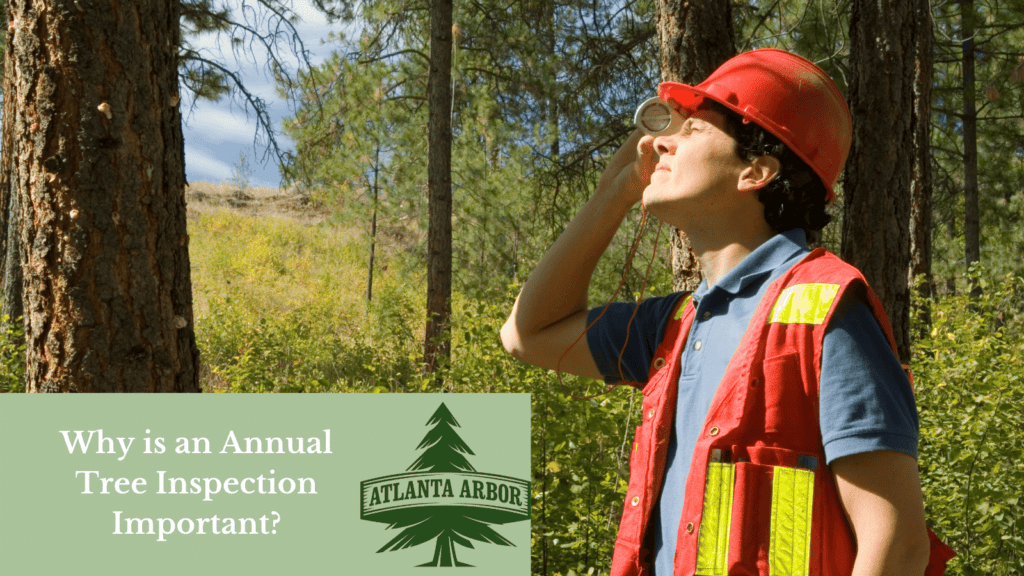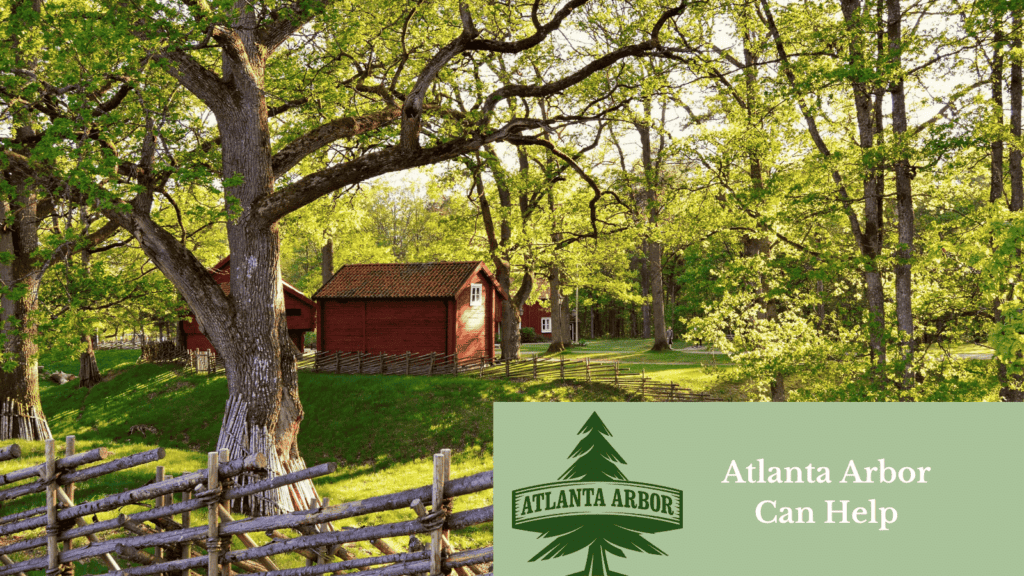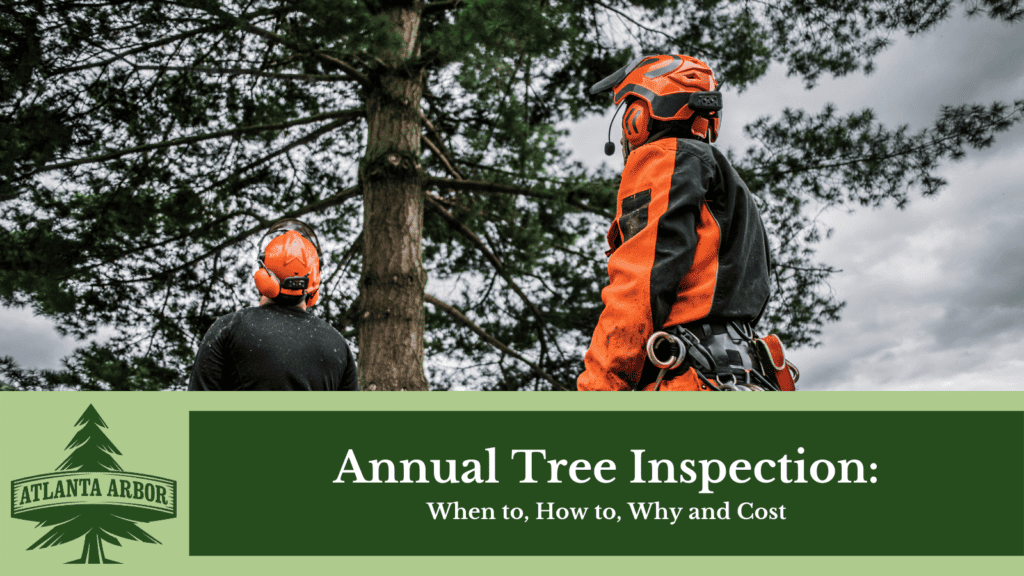As the proud owner of a property adorned with majestic trees, you understand the unique beauty and value they bring to your outdoor space. To preserve and enhance this natural asset, it is crucial to prioritize the health and well-being of your trees. Annual tree inspections are a fundamental aspect of responsible tree care and property management.
Regularly examining the trees on your property can help identify potential issues before they become severe, ensuring the health and safety of both the trees and their surroundings. Yearly inspections by TRAQ certified arborists, and Master Arborists, can make all the difference.

When Should You Have A Tree Inspection?
Deciding the best time for a tree inspection depends on various factors, including tree species, local climate, and specific circumstances. Here are some general guidelines:
- Late Winter or Early Spring: This is often the ideal time for a routine annual inspection. Trees are usually dormant, and without leaves, making it easier to see structural issues, such as cracks or weak branches. Winter is the best time for pruning to ensure maximum growth in the spring and summer.
- After Severe Weather Events: Following storms, high winds, or other extreme weather conditions, it’s advisable to inspect trees for any damage that may have occurred.
- When Noticeable Changes Occur: If you observe changes in your tree, such as signs of disease, pest infestation, or sudden changes in foliage, an inspection is warranted.
- During Significant Growth Phases: For young trees or newly planted trees, more frequent inspections can help ensure they are developing correctly and adjust any supports or protection as needed.
- Before and After Construction Projects: If construction occurs near trees, inspecting both before and after the project helps assess any potential impact on the trees.
How an Annual Tree Inspection Works: The Process
The process of an Annual Tree Inspection is thorough and systematic, ensuring that every aspect of your trees’ health and safety is evaluated. Here’s an example of the process:
- Selection of a Qualified Arborist: The first step is to choose a certified arborist or a reputable tree care service.
- Initial Consultation: Once you’ve selected an arborist, the process usually begins with an initial consultation. This may involve discussing any specific concerns you have about your trees, the history of your property’s landscaping, and any previous tree care practices you’ve undertaken.
- On-Site Inspection: The arborist then conducts an on-site inspection. This comprehensive examination includes assessing each tree’s overall health, structure, and stability. They check for signs of disease, pest infestation, and any environmental stressors affecting the trees.
- Detailed Examination: Using their expertise and specialized tools, the professional will closely inspect the condition of the bark, trunk, branches, leaves, and root system. They may use technology like aerial lifts for tall trees or resist-ographs to check for internal decay.
- Report and Recommendations: After the inspection, the arborist will provide you with a detailed report. This report includes findings on each tree’s health, any potential risks or hazards, and recommendations for maintenance or treatment. This might involve suggestions for pruning, disease management, soil care, or even tree removal if necessary.
- Scheduling Follow-Up Services: If the inspection uncovers issues that need addressing, you can discuss and schedule follow-up services with the arborist. They can perform necessary tree care tasks or guide you on how to care for your trees properly.
- Ongoing Maintenance Advice: A professional arborist will also offer advice on ongoing tree maintenance and how to best protect and nurture your trees throughout the year.

Why is an Annual Tree Inspection Important?
An annual tree inspection is important as it plays a pivotal role in early detection and management of potential issues, ensuring the plant and tree healthcare. Regular inspections help identify signs of disease, pest infestation, structural weaknesses, or environmental stress factors that could impact a tree’s well-being. Addressing these issues promptly can prevent more significant, costly problems in the future, such as property damage or safety hazards. Moreover, these inspections contribute to the aesthetic and ecological value of your landscape, maintaining vibrant, healthy trees that enhance your property’s overall appeal and environmental quality.
Safety First:
One of the primary reasons to have your trees inspected regularly is to ensure the safety of your property and its occupants. Arborists play a vital role in identifying potential hazards such as weak branches, diseased limbs, or structural issues that could lead to tree failure. By addressing these issues promptly, you mitigate the risk of accidents, property damage, and personal injury.
Pest Prevention and Treatment:
Trees, like any living organisms, are susceptible to pests. Regular inspections allow arborists to detect signs of pest infestations early on. Whether it’s destructive insects, fungi, or diseases, timely intervention can prevent irreparable damage and save you tons of hard earned money. Arborists can recommend appropriate treatments to safeguard your trees and maintain their vitality.
Disease and Fungal Growth Detection:
Trees can fall victim to various diseases and fungal infections that may not be apparent to the untrained eye. Arborists possess the expertise to identify these issues and implement measures to mitigate their impact. Early detection and targeted treatments can significantly improve the chances of saving a tree afflicted by disease.
Canopy Maintenance for Safety and Aesthetics:
Trimming and maintaining a tree’s canopy are essential for both safety and aesthetics. Overgrown branches pose a risk of falling and can potentially cause harm or property damage. Regular maintenance not only reduces these risks but also enhances the visual appeal of your outdoor space, contributing to an overall well-groomed appearance.
Property Value Enhancement:
Well-maintained and healthy trees add significant value to your property. Potential buyers often appreciate a property with mature trees, and the overall aesthetics can positively influence the perceived value of your home. Investing in regular tree inspections is, therefore, an investment in your property’s market value.
Peace of Mind and Stress Reduction:
By entrusting certified arborists with the care of your trees, you gain peace of mind. They become your advocates in managing your property’s green assets, allowing you to relax and enjoy your outdoor space without the stress of potential tree-related issues.

How Much Does the Average Tree Inspection Cost?
The average cost of an annual tree inspection can vary widely based on several factors including the location, the number and size of trees, the scope of the inspection, and the qualifications of the professional conducting it. Generally, homeowners can expect to pay anywhere from $100 to $500 for a professional tree inspection.
It’s always a good idea to get quotes from several local certified arborists to compare prices and services. After the tree inspection, there can be additional costs for tree removal and repair. Setting up an Arborist Consultation is a great place to start. Some arborists may also offer package deals or discounts if multiple trees are inspected at the same time. Remember, investing in regular tree inspections can save money in the long run by preventing costly damage and maintaining the health of your trees.
